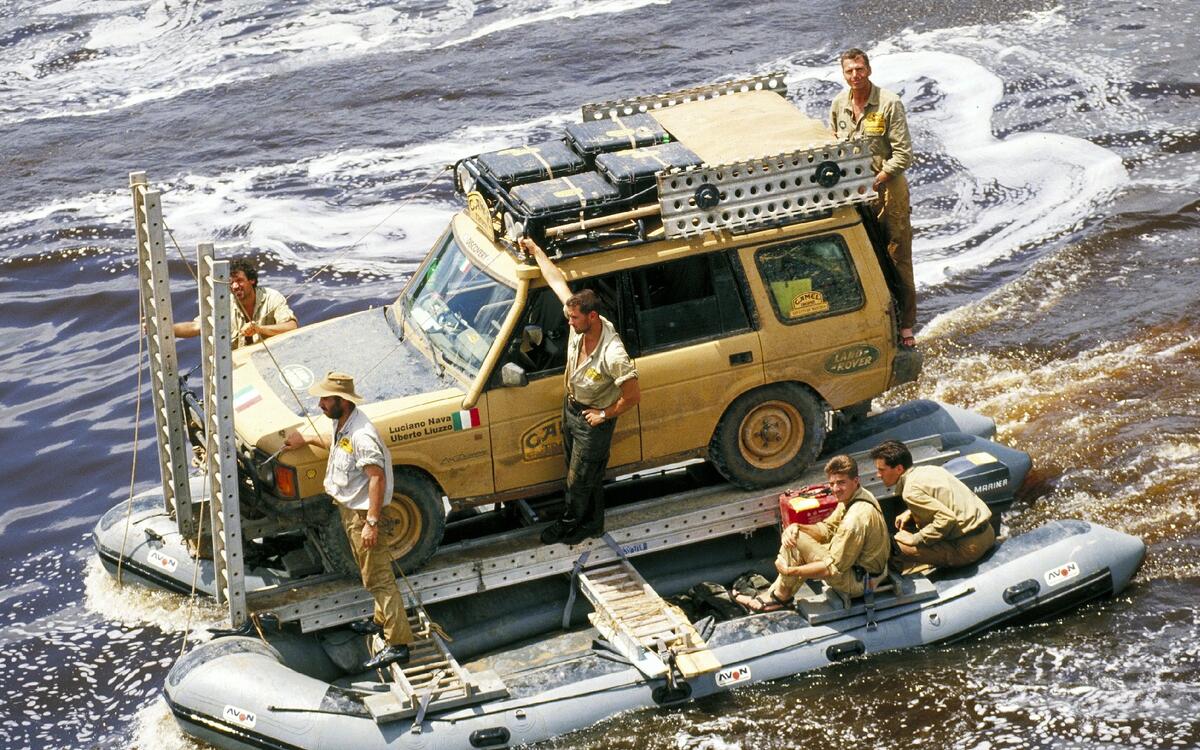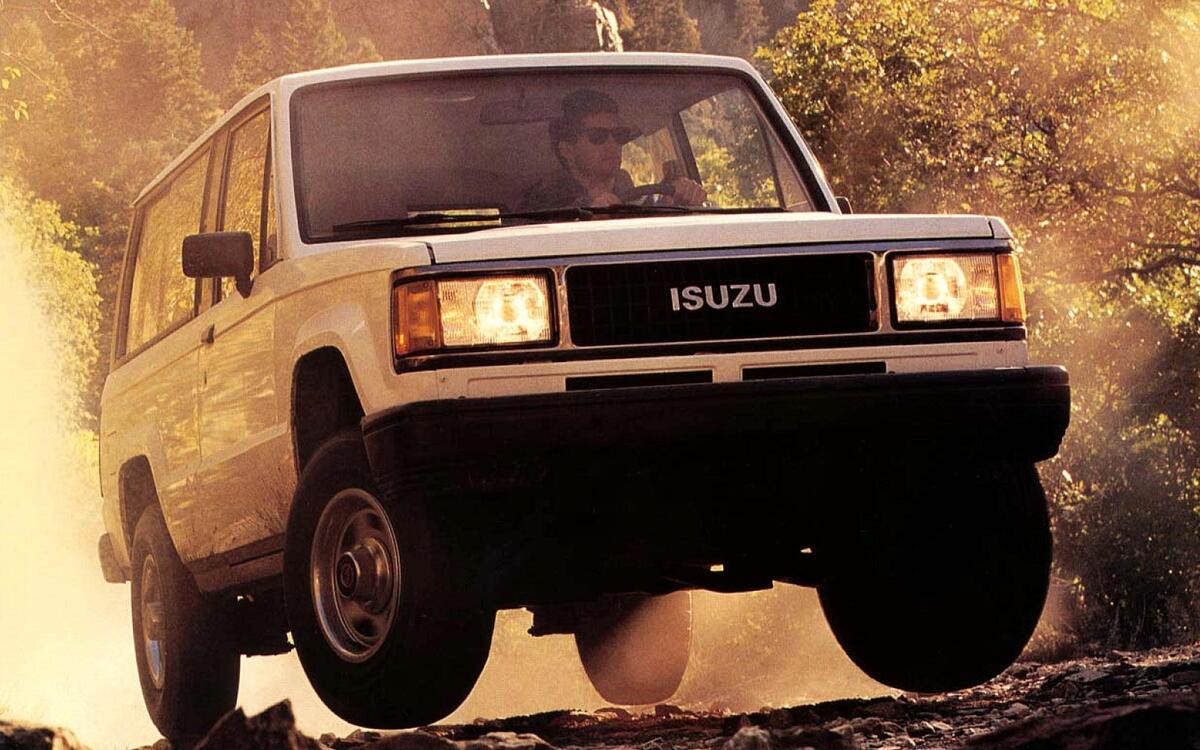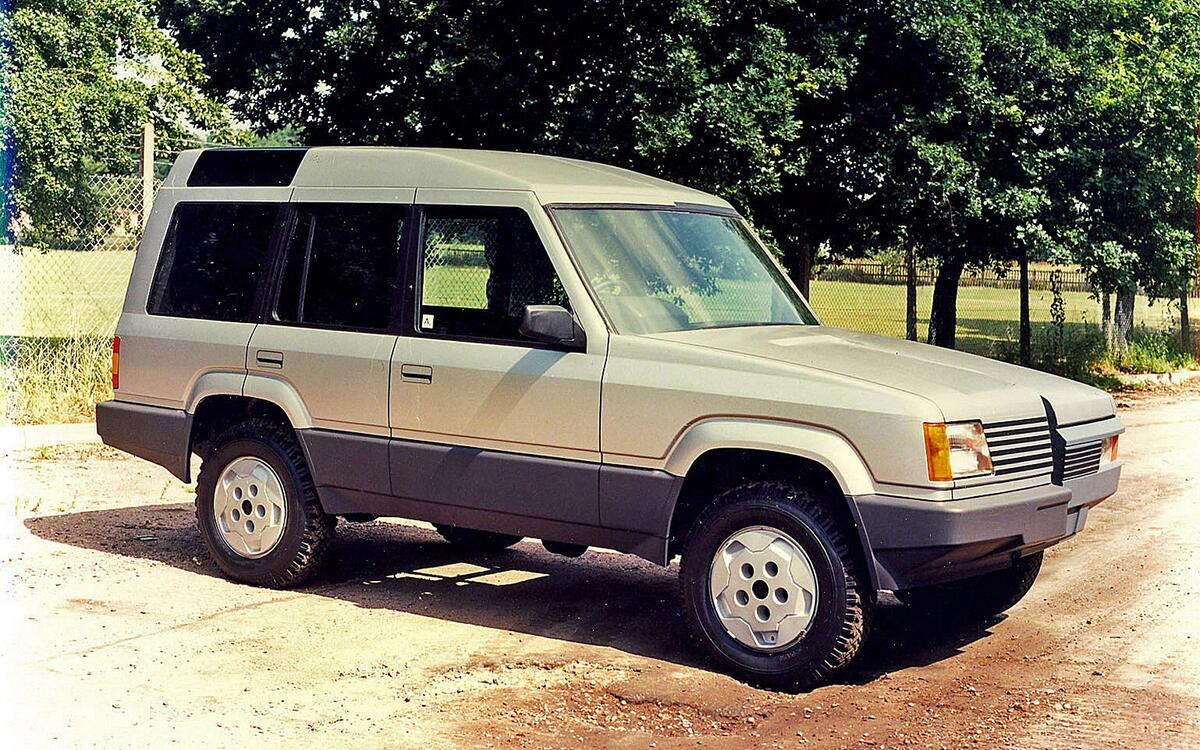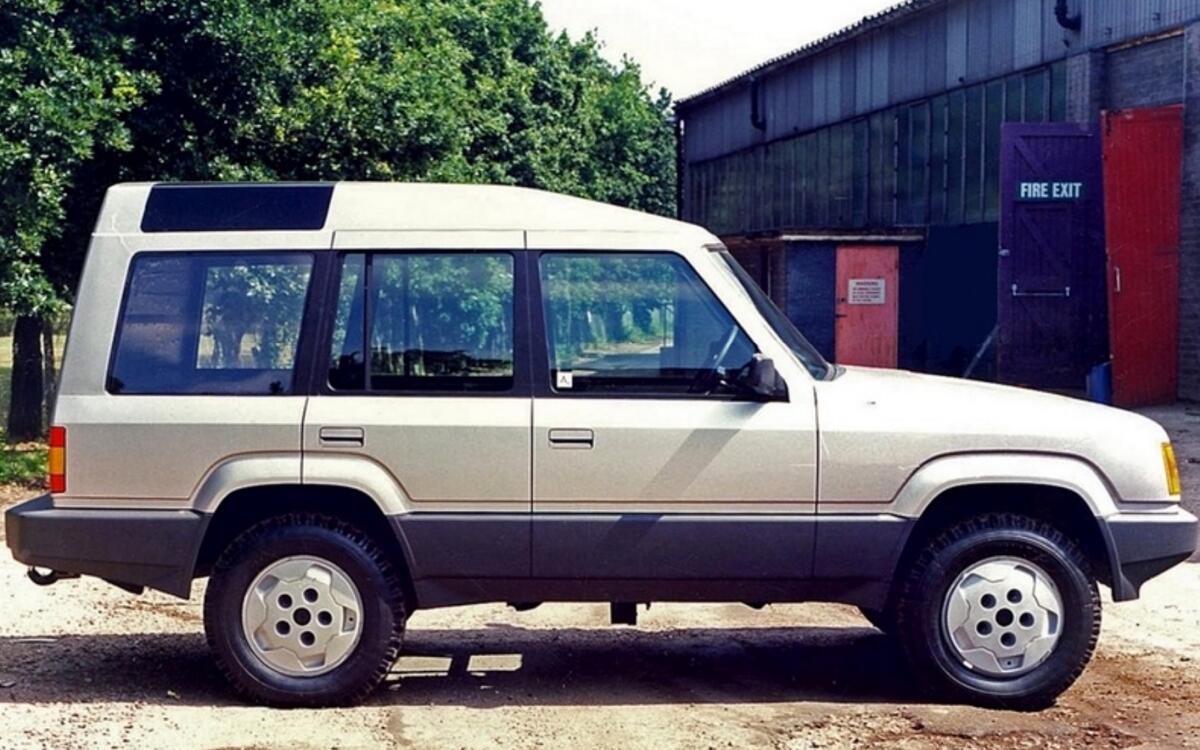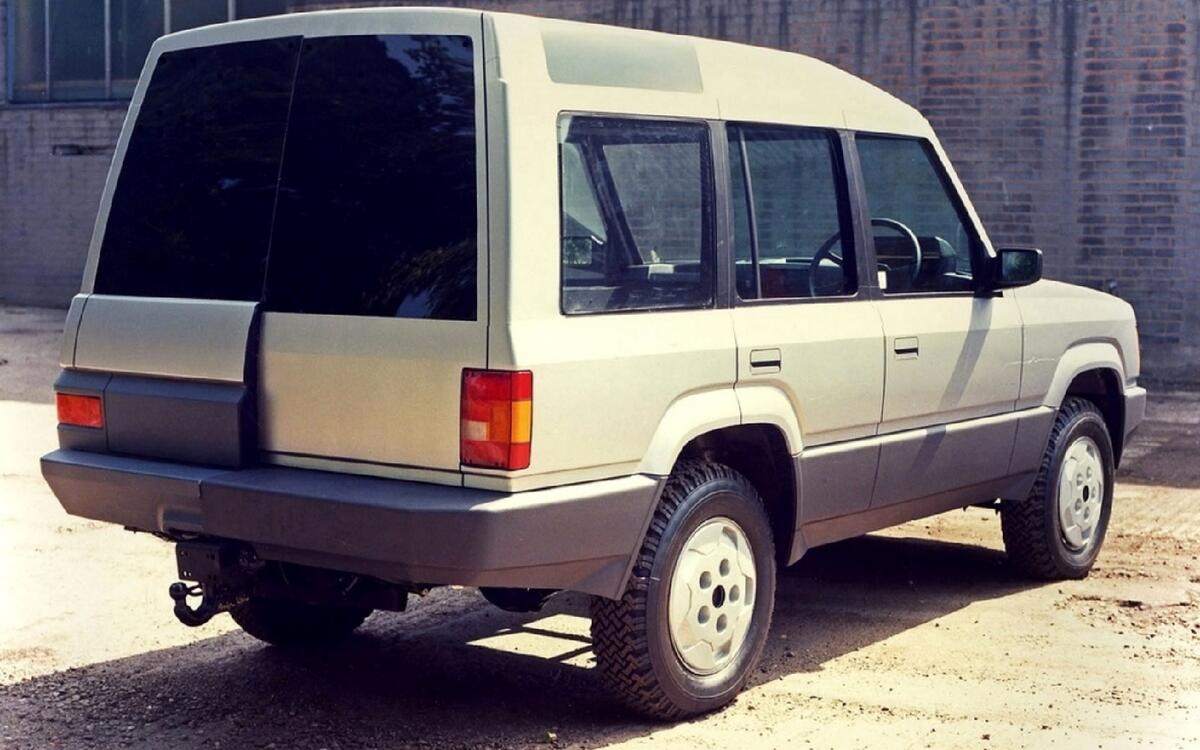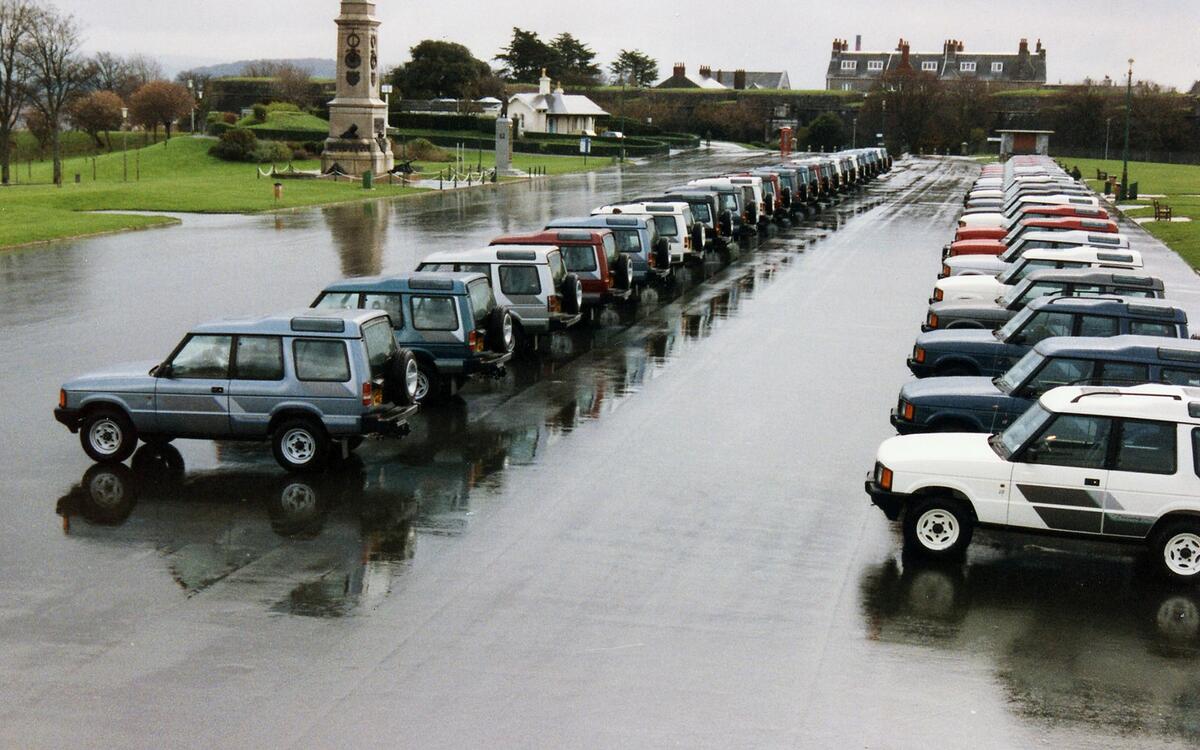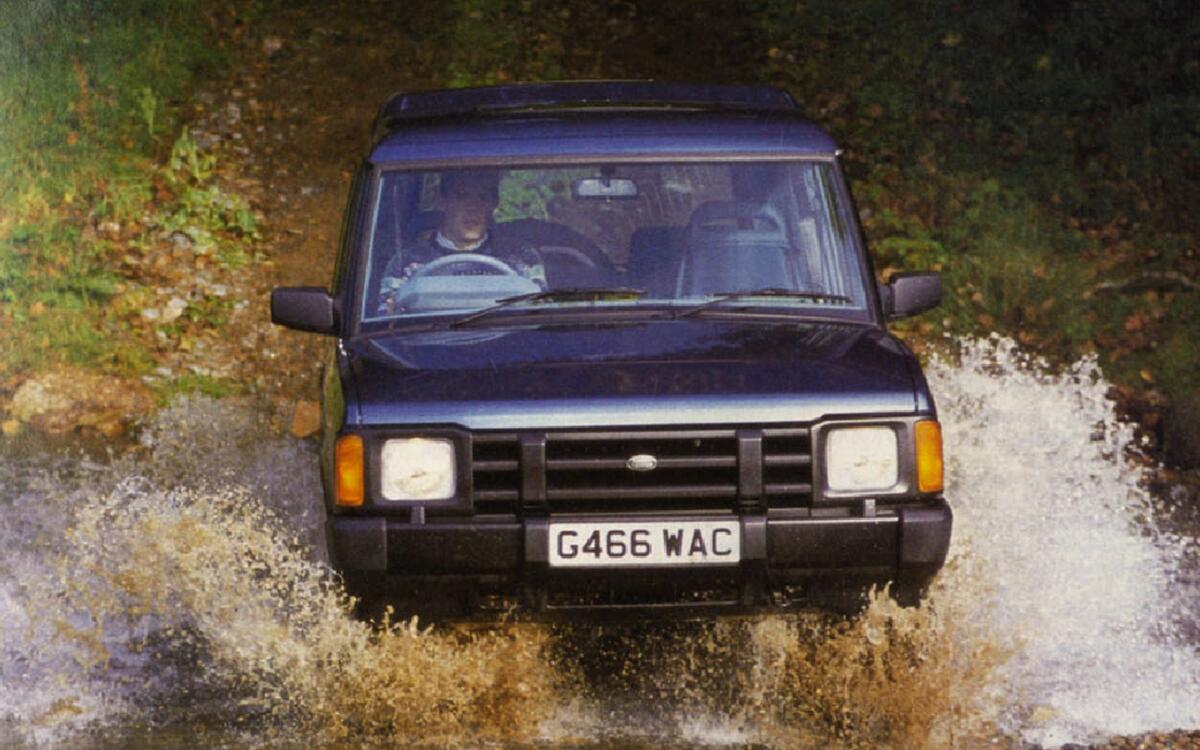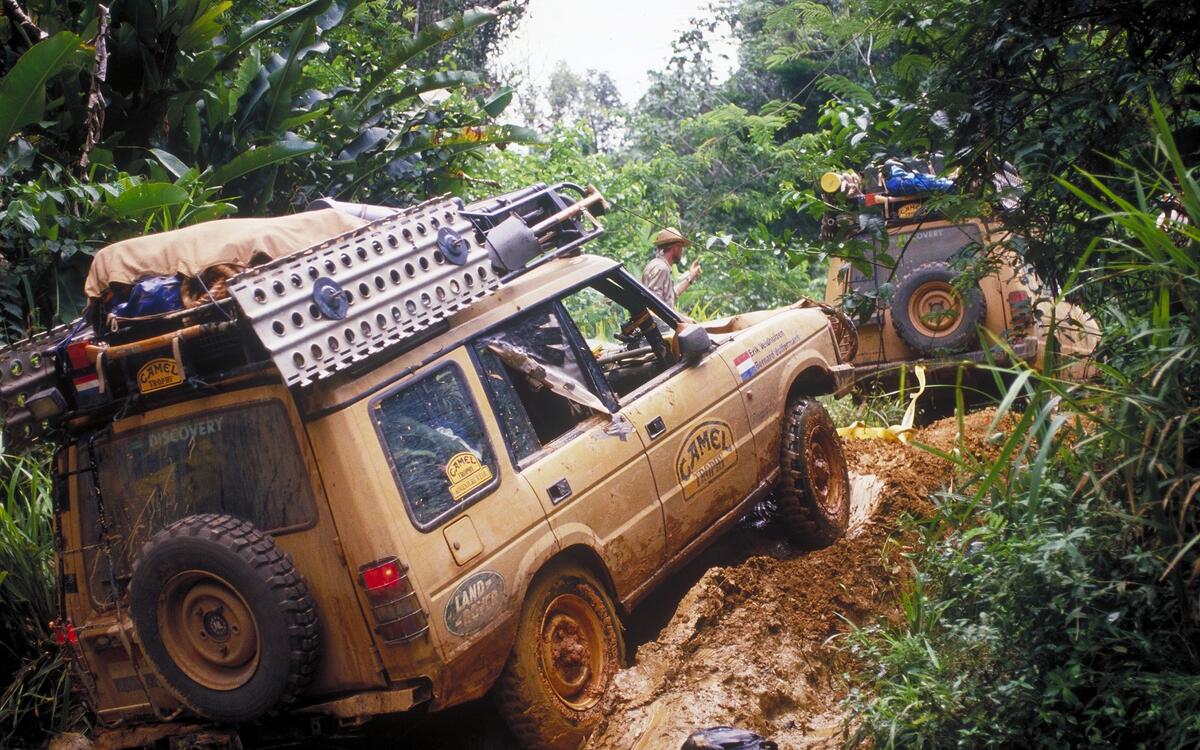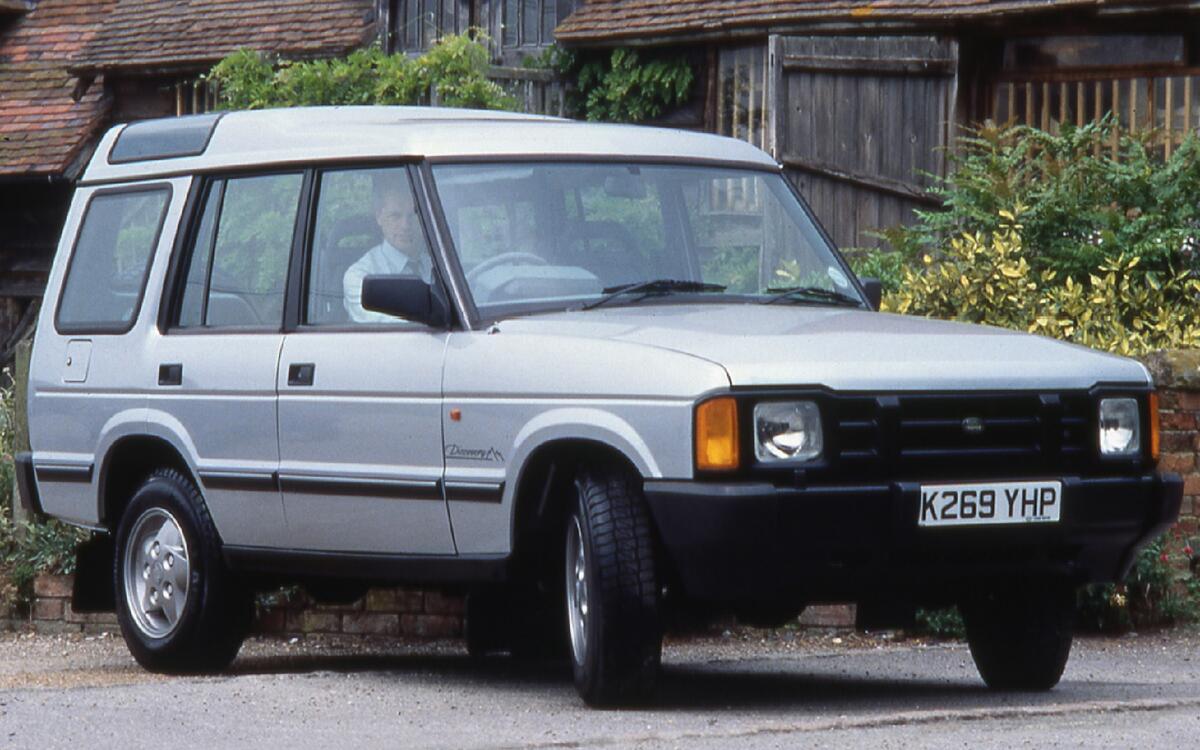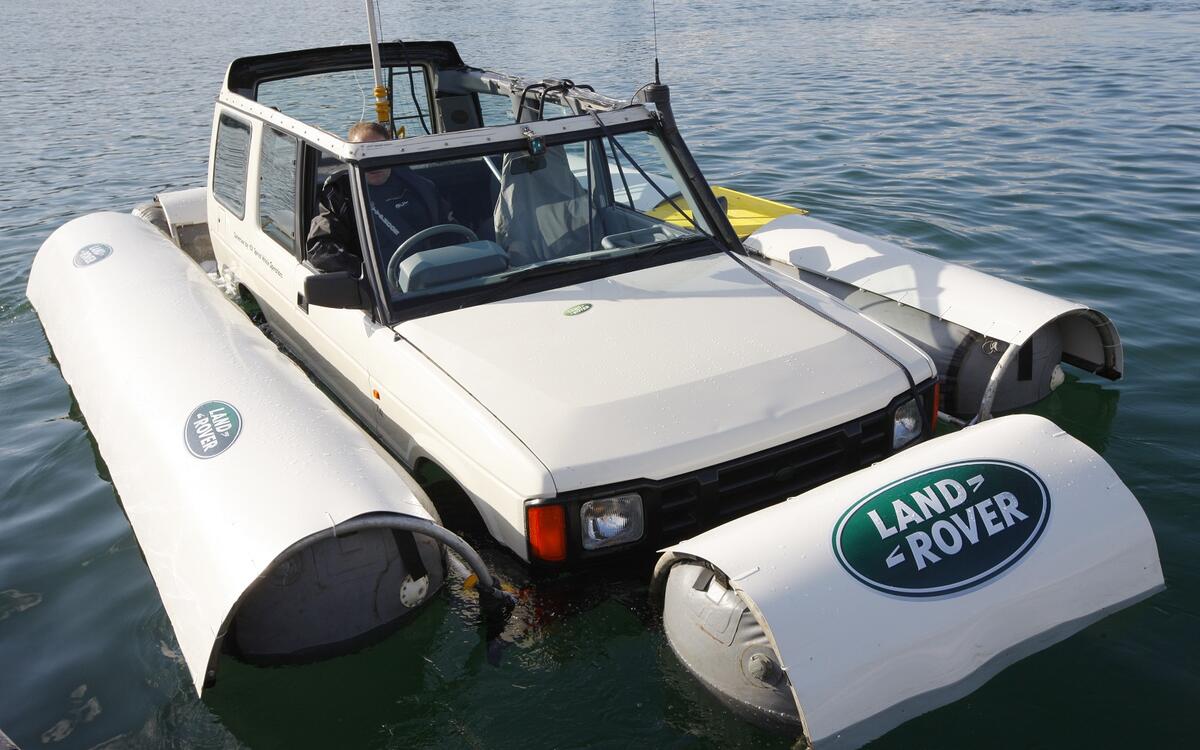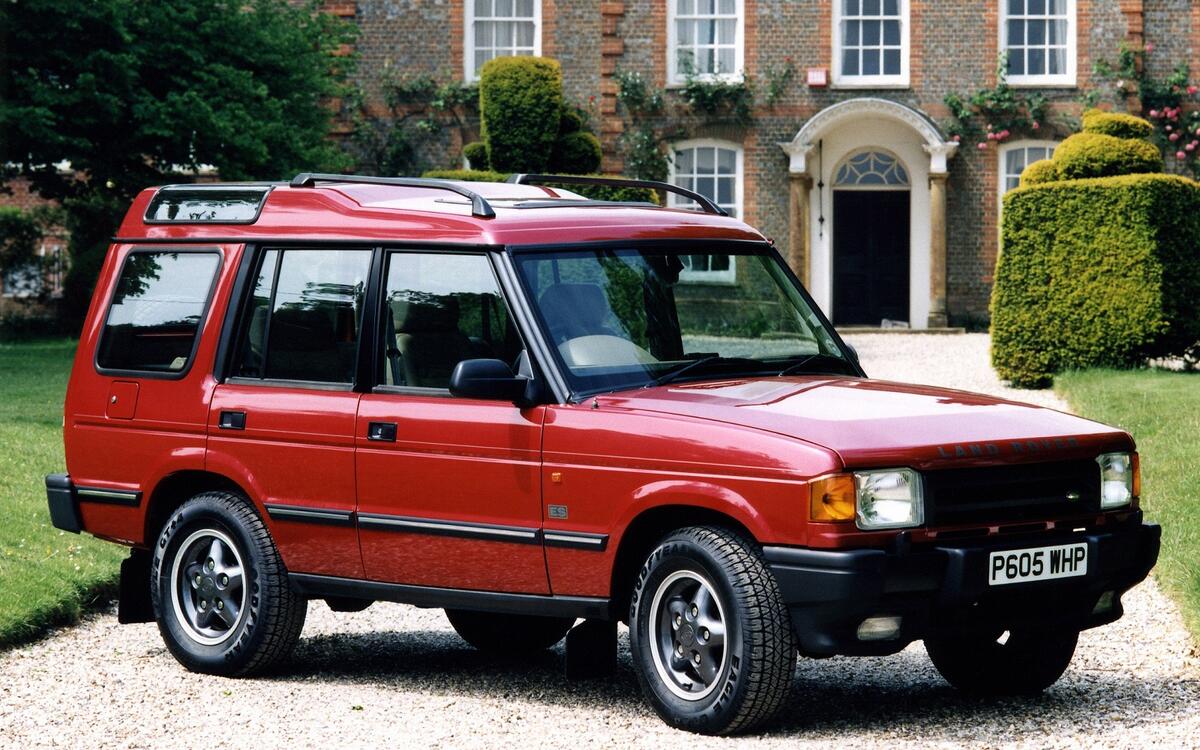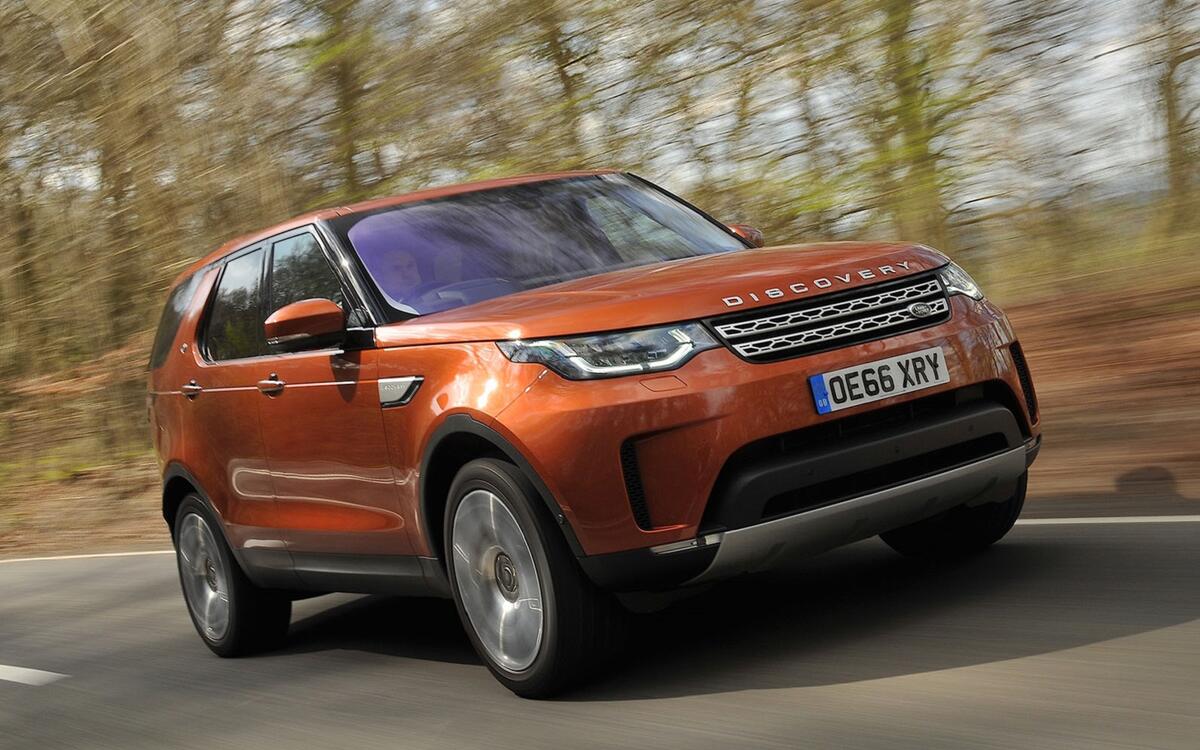 Slide of
Slide of
The original Land Rover Discovery is one of the rare vehicles that has permeated the borders of countries and social classes.
In the 1990s, you were just as likely to see one driven by the town doctor during a long day of house calls as you were to see the local farmer using one to tow bales of hay. It’s equally at home traveling on country roads as it is exploring Mayan ruins in central America; one even redefined the meaning of the term off-road by sailing to the Isle of Wight.
We’re celebrating the first-generation Discovery’s 30th birthday by looking at how and why Land Rover developed it and what it meant for the brand.
 Slide of
Slide of
Bridging a gap (1980s)
Land Rover played a significant role in amplifying the recreational off-roader segment when it released the original Range Rover in 1970. Celebrated around the globe as one of the first what-came-to-be-known-as sport utility vehicles, the Range Rover was rugged enough to take motorists far off the beaten path but it was also comfortable enough to be used as a daily driver on paved roads.
Land Rover gradually moved the original Range Rover (pictured) upmarket during the 1980s by adding more creature comforts, including leather upholstery, power-operated equipment and climate control and by making its price correspondingly higher. This strategy worked extremely well, and it helped the company launch the Range Rover in the United States in 1987, but it also created a big gap in its line-up. Land Rover left behind buyers seeking something tamer than a Defender but cheaper than a Range Rover.
 Slide of
Slide of
The Japanese offensive (1980s)
As shrewd as ever, Japanese automakers released models like the Isuzu Trooper (pictured), the Mitsubishi Pajero (also called Shogun and Montero) and the Toyota Land Cruiser to lure buyers who could no longer find a suitable Land Rover to meet their off-pavement needs.
These SUVs struck a more or less friendly balance between off-road capacity and daily drivability and they became hugely popular during the 1980s in key markets like the United States, the United Kingdom and Australia. Japanese off-roaders effectively kicked Land Rover out of Africa, too. Alarmed, the company decided to fight back.
 Slide of
Slide of
Gilroy’s baby (1986)
Encouraged by Tony Gilroy, Land Rover’s stalwart managing director at the time, engineers began working on a mid-range model to challenge Japanese 4x4s in 1986. They called the car Project Jay internally. Early on, Land Rover decided it couldn’t start Project Jay using a frame from the Defender 90 or 110 because the former was too small and the latter was too big.
The 16-year old Range Rover was just the right size, though. With a pressing need to keep costs in check and a formal request to deliver the car as quickly as possible, engineers chose to build Project Jay on the Range Rover’s bones. This decision was fiercely challenged within the company but it ultimately allowed Land Rover release the Discovery on time. PICTURE: early Discovery design sketch.
 Slide of
Slide of
Choosing a path (1986)
The design team working on Project Jay created the first clay models in late 1986. They explored numerous design directions. Some early sketches looked extremely futuristic while others were characterized by much more traditional Land Rover styling cues. There were two- and four-door proposals, and a few were drawn with a hidden spare wheel, but nearly all of the sketches featured the high roof that has been one of the Discovery's trademarks since its inception.
Stylists also went to great lengths to hide Project Jay's Range Rover roots. PICTURE: early styling proposal.
 Slide of
Slide of
The prairie or the Highlands? (1986)
The company's marketing team looked for a suitable name while designers styled the body. They chose Discovery after considering several other options including Highlander (which was already used by Volvo on a truck and which Toyota later adopted) and Prairie Rover.
Every aspect of the project advanced quickly; Land Rover wisely realized it had let its rivals get ahead by taking its time to develop new models during the 1970s and the early 1980s. PICTURE: early design sketch.
 Slide of
Slide of
Parts sharing (1980s)
Ultimately, parts availability largely shaped the original Discovery’s final design. Land Rover couldn’t afford to make the model too futuristic because it needed to use as many existing parts as possible in order to keep development and production costs in check. Its market share had tumbled during the 1980s and profits fell accordingly.
Many suspension, chassis and powertrain parts consequently came from the Range Rover, as did some body panels. The long-retired Morris Marina donated its flush-fitting door handles (which were designed by Harris Mann and also used by the Range Rover among other models), the Austin Maestro van provided its rear lights and the headlights were sourced from the Freight Rover van. Many bits and pieces inside came from the Rover parts bin, too, such as the instruments and dials that came from the Austin Montego.
 Slide of
Slide of
The lifestyle accessory (1980s)
Land Rover asked Conran Design Group – a company better known for its work in the furniture industry – to design an interior for a car it planned to market as a lifestyle accessory. The team in charge of the project came up with clever features like storage compartments above the windscreen, twin sunroofs (also called alpine lights) over the rear seats and a detachable shoulder bag mounted on the rear part of the center console. They selected a light shade of blue for the plastics and for the upholstery to create a spacious atmosphere.
Meanwhile, Land Rover decided to offer the Discovery as a seven-seater thanks to a pair of optional jump seats in the cargo compartment. The company predicted this feature would help set the model apart from its five-seater rivals.
 Slide of
Slide of
The early Discovery, by the numbers (1989)
Land Rover introduced the Discovery during the 1989 Frankfurt motor show, coincidentally as NASA prepared to send Space Shuttle Discovery on its ninth mission. The event’s organizers tucked the British brand’s stand in a far corner of the venue but its new 4x4 was unquestionably one of the stars of the show.
The Discovery began arriving in showrooms in November 1989. At launch, the line-up included a 2.5-liter turbodiesel with 111hp or a carbureted version of the venerable, Buick-derived 3.5-liter V8 with 145hp. In both cases, power traveled through a five-speed manual transmission before reaching the four wheels.
 Slide of
Slide of
The competition (1989)
Land Rover launched the Discovery in an increasingly crowded field of off-roaders later grouped under the SUV umbrella. In Europe, its main rivals included the Toyota Land Cruiser (pictured), the Nissan Patrol, the Mitsubishi Shogun, the Daihatsu Rocky, the Jeep Cherokee and the Isuzu Trooper. Motorists less concerned with on-road manners could also look at the Lada Niva, which was already beginning to seriously show its age.
Land Rover charged £15,750 for the Discovery diesel in 1989. To add context, a comparable Mitsubishi Shogun cost £17,859. The British had achieved the seemingly impossible task of undercutting the Japanese.
 Slide of
Slide of
The start of a new era (1989)
The Discovery was well received by the public and the press. In the UK, Land Rover sold about 3500 examples during the model’s first two months on the market. It had completed its mission of turning Land Rover into a full-line carmaker by bridging the gap between the Defender and the Range Rover.
While the Defender would live on, essentially unchanged, for many more years, the Discovery's success let Land Rover focus on finally replacing developing a replacement for the Range Rover.
 Slide of
Slide of
Autocar’s first road test (1989)
The original Discovery impressed Autocar when we drove it for the first time in November 1989.
“With what is essentially a Range Rover chassis, complete with coil springs and permanent four-wheel drive, Discovery brings a level of 4WD technology to the class that has not been seen before. Combined with a fresh interior approach that matches the Japanese on space and versatility yet is more recognisably car-like than any of its competitors, Land Rover is not relying solely on its reputation to sell the product,” we concluded.
 Slide of
Slide of
The Discovery takes on the Camel Trophy (1990)
Land Rover had begun sponsoring the Camel Trophy in 1981, a year after the first edition of this grueling event was held. The Camel Trophy was an off-road expedition that took participants through some of the harshest terrains on earth. Finishing it – let alone finishing first – required a serious off-roader upgraded with many add-ons, including a powerful winch and thick skid plates. The human skills needed to complete this arduous journey can’t be overstated, either.
The Discovery participated in the Camel Trophy between 1990 and 1997, when it passed the torch to the then-new Freelander. It powered through Siberia, Tanzania, Guyana, Mongolia and numerous countries in Latin America. Its ability to tackle these muddy, snowy and rocky courses played a large role in showing buyers it was a true off-roader even though it was markedly more sophisticated than the Defender.
 Slide of
Slide of
More to discover (1990)
The Discovery line-up grew for the first time in 1990 with the launch of a four-door model planned from the project's earliest days. It was all but identical to its two-door counterpart with the exception of an additional pair of doors but it quickly became the best-selling variant. Keeping in line with Land Rover’s upmarket push, 1990 also brought a better-appointed trim level named ES available with power windows, air conditioning and central locking.
Executives didn't want to turn the Discovery into a luxury car, though. "It is a leisure vehicle, not aimed at the luxury sector at all. Discovery, if you will, is for Yuppies and Range Rover is for people who have already made it," explained Chris Woodwark, Land Rover's commercial director, in a 1989 interview with Autocar.
 Slide of
Slide of
Capable over land – and through the water (1990)
The Discovery fully demonstrated its off-road prowess during the Camel Trophy. Land Rover proved off-road also meant in the water by building an amphibious Discovery in 1990. Starting with a four-door model, it chopped off the archetypal stepped roof, sealed the body, added floatation bags and installed an outboard motor. The Discovery demonstrated it made a fine boat by participating in the Cowes Week yachting regatta in 1990.
 Slide of
Slide of
The Japanese Discovery (1993)
Land Rover wasn’t the only automaker caught off-guard by Japanese off-roaders. Honda stood on the sidelines while rivals Nissan, Mitsubishi and Toyota grew fat and happy selling SUVs on all four corners of the globe. It owned a 20% stake in Rover so it easily obtained Land Rover’s permission to offer a badge-engineered Discovery called Crossroad in its home country. Sales began in 1993 and ended in 1998.
Reliability problems (including a highly publicized 1997 recall to fix a problem with the door locking mechanism) tainted the Crossroad’s career and sales remained relatively low. As of 2019, it’s the only Honda model ever offered with a V8 engine.
 Slide of
Slide of
Romulus (1994)
The Discovery turned out to be the hit Land Rover hoped it would be but it couldn’t rest on its laurels. It needed to update its mid-range model for several reasons. First, the P38-generation Range Rover released in 1994 was positioned even further upmarket than its predecessor so the Discovery range had to become broader. Second, Land Rover was preparing to finally introduce the model in the United States and it knew buyers there expected more creature comforts than European drivers settled for.
Called Romulus internally, the updated Discovery released at the 1994 Geneva motor show benefited from a long list of updates including a new-look design, a comprehensively updated interior and a new 2.5-litre diesel engine that was more refined but only received a 2bhp boost.
 Slide of
Slide of
Discovering America (1994)
Land Rover added the Discovery to its American line-up in the spring of 1994. Market research showed American motorists had little appetite for the relatively bare-bones variants of the model so the Discovery was only available as a four-door powered by a 3.9-liter V8 rated at 182bhp. It came standard with a five-speed manual transmission but most buyers selected the optional four-speed automatic.
The Discovery arrived in America at the right time. SUVs were already becoming wildly popular, the Ford Explorer and the Jeep Cherokee were present on every street corner, and Land Rover’s entry gave motorists looking for an upgrade a fresh alternative with serious off-road capability.
 Slide of
Slide of
The second-generation Discovery (1998)
Land Rover ended production of the original Discovery in September 1998 after making 392,393 examples in its Solihull factory. Also called Discovery, its successor wore an evolutionary design, though it was only available with four doors, and it received a long list of updates to make it more comfortable on and off the road and generally more advanced.
The Freelander introduced in 1997 was positioned at the very bottom of the Land Rover line-up, and the Range Rover continued moving up, so the firm could safely push the Discovery in a posher direction.
 Slide of
Slide of
Has the Discovery stood the test of time? (2019)
Autocar borrowed the first series-produced Discovery (pictured) from Land Rover’s Heritage Collection to get a feel for what it’s like to drive in 2019. It’s louder and slower than we’d reasonably tolerate in a modern-day 4x4 but driving it remains a unique and memorable experience.
“The airiness of this Disco, the way you look down from it towards the road below, its lightly heaving gait and the light snortings of its 2.5 four-pot diesel prove strangely restful. And no other car, now or then, provides the same in-cabin ambience of an original Discovery,” wrote senior contributing editor Richard Bremner.
 Slide of
Slide of
The Discovery in 2019
Sharp lines and a tall, boxy design were the Land Rover Discovery’s visual hallmarks until the fifth-generation model shattered tradition. Launched in 2016, it’s built on an aluminium platform, it looks absolutely nothing like its predecessors and it’s the first Discovery made solely outside of the United Kingdom; as of 2019, production takes place in Slovakia.
Land Rover defended its decision by pointing out it needed to re-invent the Discovery in order to broaden its appeal; it also applied this design philosophy to the Range Rover and to the Defender. But while its design is more Hugo Boss than The North Face, it remains impressively capable off-road yet it’s more comfortable than ever on the pavement.
“The fifth-generation Land Rover discovery may look like a quite different prospect from any namesake but driving it is like being with an old friend who has been given a new waxed jacket and a new lease of life to go with it,” Autocar wrote after driving it.
Land Rover recognized the Discovery’s significance in its history by positioning it as one of its three brand pillars; the Freelander morphed into the Discovery Sport. The Range Rover and the Defender are the other two pillars the company is built on. Talking of which, an all-new Defender will be unveiled at the 2019 Frankfurt motor show - how happily the Discovery coexists with it will be fascinating to behold.
The first Discovery added much-needed coherence to the Land Rover portfolio - 30 years on, we tell the full story
Advertisement


